Heroin Addiction Treatment
Substance use disorders such as heroin addiction come in a variety of classes at The Villa Treatment Center that develops as a result of your genes, environmental influences, and the availability of addictive substances. It’s often commonplace for people to talk about recreational drug use without concern for addiction to develop. Affinities for substance abuse can depend on a particular drug of choice for the individual based on their reaction to it and mindset when taking the drug.
At The Villa Treatment Center, we understand that many of our clients come to us having become addicted to heroin and other substances by recreational use that over the years exposed them to addictive behaviors. During your intake meeting and evaluation by our qualified medical and addiction staff, we offer a few different methods of diagnosis to educate our clients properly on their current situation and types of heroin addiction treatments we can offer them.


Why is heroin so addictive?
The latest statistics in addiction medicine have stated that 586,000 people in the United States alone are addicted to heroin. About 10,000 of those people have died from accidental overdose or suicide success attempts because of the incredible attachment to the feeling of the drug. Many people describe it as an overwhelmingly intense feeling of happiness or elation that lasts only a short time; heroin mimics the natural effects of oxytocin produced in small amounts in the brain, but at levels so high that it overrides any natural good feelings the body could ever produce.
Those addicted to heroin chase the feeling that comes with this drug in their everyday living experience, but unfortunately, they cannot get this without heroin use, and depression sets in. Tolerance levels increase over time and become dangerous to consume since depending on the individual, too much is never enough.
Physical symptoms and conditions that develop in heroin addicts:
- Pulmonary edema (fluid in the lungs)
- Endocarditis
- General cardiovascular disease
- Varicose veins
- Collapsed veins
- Breathing problems
- Nasal membrane deterioration
- Increased chances of infection with nasal mucus damage
- HIV
- Hepatitis
- TB
- Infertility
- Sexual dysfunction or unbalanced menstruation

Heroin Addiction Recovery at The Villa Treatment Center
At The Villa, we assist those suffering from heroin dependence by offering addiction diagnosis to recognize the condition, detox, counseling, dual diagnosis, and many other alternative evidence-based therapies. We craft custom heroin rehabilitation and recovery programs that address all sides of addiction and work from the bottom up with you.
Heroin addiction is called an addiction because the majority of clients that come to us have allowed their substance abuse to overcome their need for the necessities of living, and have placed the necessary things off to the side while the drug remains at the center. To get your life under control and replace that burning desire for heroin use, our inpatient programs at The Villa Treatment Center are designed to retrain your brain so that you can focus on getting well and sober.
Development of Heroin
Heroin is one of those substances that should not be taken recreationally, because of its highly addictive attributes; the drug was developed for medical purposes originally. Like all opiates, heroin at the time of development was created as a way for physicians to offer a pain medication that was less addictive and potent than morphine in the 1920’s. Heroin is processed from morphine and was originally mistaken to be half of the strength that morphine was. Unfortunately, unlike what physicians and scientists at the time thought, it was even more potent and addictive than morphine and was eventually banned from use without prescription a few years later.
Processing and Use of Heroin
Poppy plants all around the world are the parent ingredient that is used to make opiates such as morphine, heroin, oxycodone, and methadone. Opiates are acquired from the seeds of the poppy plant, and a pure form is created, that is often combined with a slew of other ingredients unknown to the general population upon use. It’s important to understand where heroin comes from and how it’s made so that people can understand the dangers associated with use.
Depending on the type of heroin and where it comes from, can change the way it looks; heroin in its purest form is a white powder or gel-like substance. Darker less pure forms of the drug are described as street or black tar heroin and are dangerous to consume. Injection is the most harmful way to use, but every method can be fatal and wreak havoc on the body.
Injection packs the most punch with heroin because the drug is not broken down by the body’s protective enzymes that are in place to avoid infections, but directly pumped into the blood and brain. Heroin can be snorted and smoked as well, but because of the delayed reaction to the drug with these methods injections are the most popular way in which addicts prefer to take it.
Heroin is an epidemic that saturates the street market, fueling those addicted to its effects. Years of medical studies have shown that men outweigh women three to one when it comes to the addiction of heroin and other opiates as their pain thresholds may be lower.
To learn more about heroin addiction recovery, dangers, diagnosis and to schedule your intake call with The Villa Treatment Center, please
Development of Heroin
Heroin is one of those substances that should not be taken recreationally, because of its highly addictive attributes; the drug was developed for medical purposes originally. Like all opiates, heroin at the time of development was created as a way for physicians to offer a pain medication that was less addictive and potent than morphine in the 1920’s. Heroin is processed from morphine and was originally mistaken to be half of the strength that morphine was. Unfortunately, unlike what physicians and scientists at the time thought, it was even more potent and addictive than morphine and was eventually banned from use without prescription a few years later.
Processing and Use of Heroin
Poppy plants all around the world are the parent ingredient that is used to make opiates such as morphine, heroin, oxycodone, and methadone. Opiates are acquired from the seeds of the poppy plant, and a pure form is created, that is often combined with a slew of other ingredients unknown to the general population upon use. It’s important to understand where heroin comes from and how it’s made so that people can understand the dangers associated with use.
Depending on the type of heroin and where it comes from, can change the way it looks; heroin in its purest form is a white powder or gel-like substance. Darker less pure forms of the drug are described as street or black tar heroin and are dangerous to consume. Injection is the most harmful way to use, but every method can be fatal and wreak havoc on the body.
Injection packs the most punch with heroin because the drug is not broken down by the body’s protective enzymes that are in place to avoid infections, but directly pumped into the blood and brain. Heroin can be snorted and smoked as well, but because of the delayed reaction to the drug with these methods injections are the most popular way in which addicts prefer to take it.
Heroin is an epidemic that saturates the street market, fueling those addicted to its effects. Years of medical studies have shown that men outweigh women three to one when it comes to the addiction of heroin and other opiates as their pain thresholds may be lower.
To learn more about heroin addiction recovery, dangers, diagnosis and to schedule your intake call with The Villa Treatment Center, please contact us at 1-818-639-7160

